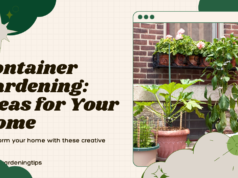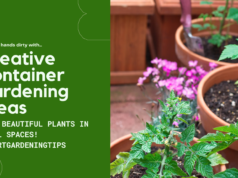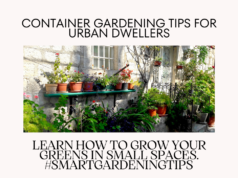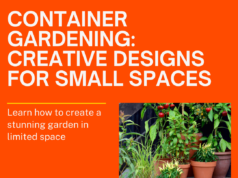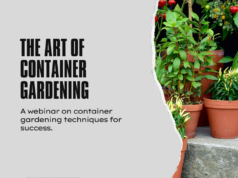Container gardening has become an increasingly popular way to grow plants, herbs, vegetables, and even small trees regardless of the amount of space you have. With the versatility of using pots, planters, or other vessels, container gardening opens up many possibilities that traditional in-ground gardening simply cannot offer.
In this comprehensive guide, we will explore everything you need to know about container gardening, from understanding the basic principles and benefits to choosing containers and plants, preparing for planting, proper care and maintenance, and harvesting your homegrown produce. Whether you live in an apartment, condo, townhouse, or simply want to add containers anywhere, this guide will provide key tips and instructions to help you master container gardening. So let’s get started on this journey into the wonderful world of gardening in containers!
Key Takeaways on Successful Container Gardening:
- Select containers with adequate drainage and use quality potting mix, not garden soil
- Choose compact, dwarf plant varieties suitable for container growth
- Use trellises and cages to support vining crops and tall plants
- Provide optimal sunlight exposure and ventilation for plants to thrive
- Water thoroughly when the top inch of soil becomes dry
- Fertilize regularly with a balanced all-purpose formula
- Prune and harvest regularly, watch for pests and diseases
- Move containers to protected areas for overwintering
- Divide and re-pot root bound plants each spring
- Disinfect tools after each use to prevent disease spread
Now let’s get started on this journey into the wonderful world of gardening in containers!
Understanding Container Gardening
Container gardening is the practice of growing plants, vegetables, herbs, and other greenery in pots or other vessels instead of planting them directly in the ground. The container essentially serves as the structure and environment for plant roots to develop, anchoring the plant while also controlling the type and volume of soil and drainage.
Some key principles for successful container gardening include:
- Selecting an appropriate container with adequate drainage holes. This allows excess water to flow out.
- Using a suitable commercial or amended potting mix, not garden soil. This provides proper drainage and nutrients.
- Choosing the right plants for containers based on sunlight, space, climate and other factors.
- Providing frequent watering and fertilizing since nutrients are more limited than in the ground.
- Giving plants proper sunshine and ventilation for photosynthesis and air circulation.
Benefits of Container Gardening
Container gardening offers numerous benefits, making it an ideal and attractive choice for urban dwellers. Whether you’re a beginner looking to start container gardening or an experienced gardener in search of a new project, container gardening provides a host of advantages.
- Potting soil and drainage – Container gardening gives you control over soil composition and drainage conditions, ensuring optimal growth for your plants.
- Grow plants anywhere – patios, balconies, rooftops, indoors by a window. No ground space needed.
- Easier to manage pests, diseases, weeds compared to in-ground plots.
- Convenient access for harvesting produce.
- Mobile – containers are easy to move for more sunlight, shade protection, or indoors over winter.
- Allows for creative expression and design not bound by garden beds. Mix flowers, herbs, vegetables together.
- Suitable for small spaces in urban dwellings like apartments or condos with no yards.
- Grow exotic plants not adapted to the native soil and climate.
Container gardening is an extremely flexible form of gardening that can be done anywhere by anyone regardless of space limitations. Let’s look at how to choose the ideal containers for your needs.
Choosing the Right Container
One of the most important decisions in container gardening is selecting suitable containers. The type of vessel will impact plant health and growth based on factors like sunlight exposure, drainage, and mobility. Here are some guidelines for picking the best containers:
Container Types
- Plastic – Affordable, lightweight and durable. However, plastic containers dry out faster. Look for UV-resistant plastic.
- Ceramic/Terracotta – Porous material allows air and water circulation but loses moisture quickly. Usually thicker and provide insulation.
- Wood – Avoid using non-rot resistant wood which can deteriorate. Redwood, cedar and composite wood are better choices.
- Metal – Hold moisture well but can heat up quickly in direct sun. Look for aluminum, stainless steel or galvanized steel.
- Self-watering – Built-in water reservoirs reduce watering frequency. Best for patios and decks.
- Fabric bags – Allow air pruning of roots, portable and inexpensive. However, less stable and prone to drying out.
- Pot or Planter: Decide whether you prefer a traditional pot or a decorative planter. Pots are often made of clay or ceramic, while planters can be made of a variety of materials such as plastic, metal, or wood. Choose one that suits your personal style and complements your overall design aesthetic.
Size and Depth
Match the container size to the type of plant, its expected mature size, and root development:
- Small plants like herbs – minimum 10-12 inches wide x 10-12 inches deep
- Larger vegetables and shrubs – 14+ inches wide x 12+ inches deep
- Climbing vines and tall plants – Use trellises for vertical growth but wider pots
- Size: Larger containers are generally better for container gardening as they provide more room for root growth and retain moisture better. However, ensure that the container is still manageable and fits well in your designated space
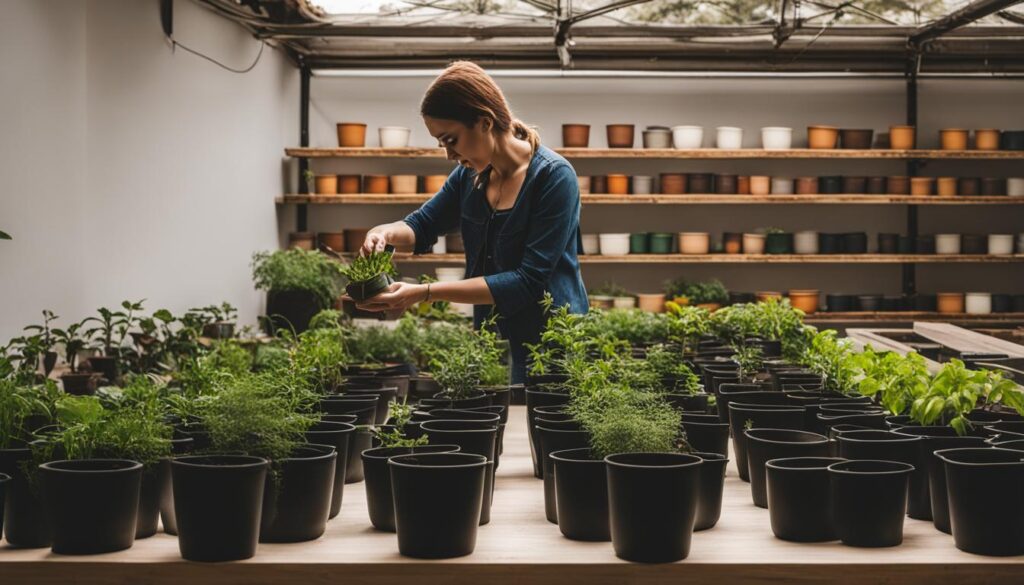
When it comes to successful container gardening, choosing the right container is key. The type of container you select can greatly impact the growth and health of your plants. Consider the following factors when making your decision:
Drainage Considerations
- Drainage holes are essential to prevent waterlogging. Elevate pots to allow drainage. These holes allow excess water to escape, keeping the soil well-balanced and aerated.
- Add gravel, pebbles, or foam at the base of pots to improve drainage.
- Use pot feet or saucers under pots to prevent staining of surfaces.
Location and Sunlight
Maximize available sunlight when placing containers for healthy plant growth.
- Place large plants against walls or fences on the north side of the area to avoid shading smaller containers.
- Avoid grouping too many containers close together. Leave adequate space between.
- Consider adding casters or wheels for mobility if sunlight conditions change.
Essential Tools and Materials for Container Gardening
The right gardening tools and materials are key to maintaining healthy container plants. Here are some container gardening essentials to have on hand:
Potting Soil Mixes
- Use a commercial soilless potting mix rather than garden soil – provides proper drainage and nutrients.
- Potting mixes with organic compost or coconut coir retain moisture but still drain well.
- For succulents and cacti, a gritty, sandy potting mix allows for rapid drainage.
Fertilizers and Soil Amendments
- Slow or controlled release fertilizer pellets provide a steady supply of key nutrients over time.
- Compost and compost tea add beneficial microbes and fortify potting soil.
- Worm castings naturally enrich soil with plant nutrients.
- Espoma Plant-tone provides balanced fertilization for potted vegetables and herbs.
Watering Tools
- Watering can with long spout is ideal for reaching soil level in containers. Select one with measurements.
- Soaker or drip irrigation hoses can provide hands-off watering. Attach timer for automation.
- Use a moisture meter to check soil moisture levels and determine watering needs.
Aesthetic Accessories
- Decorative ceramic or terra cotta cache pots can provide insulation and hide basic nursery pots.
- Use trellises, cages, stakes and supports for vining and tall plants.
- Top dressing with moss, pebbles or mulch provides a decorative finish.
Getting the proper soil medium, amendments, tools and accessories ensures your container garden has everything it needs to thrive!
Consider the functionality and style of the container while keeping in mind the needs of your plants. A well-chosen container ensures the success of your container garden and adds visual appeal to your outdoor or indoor spaces.
Choosing the Right Plants
When it comes to container gardening, selecting the right plants is crucial for a thriving and visually appealing garden. Consider a mix of perennial and annual plants to provide seasonal interest throughout the year. Perennials are plants that come back year after year, while annuals complete their lifecycle within one growing season. By combining both types, you can ensure a dynamic and ever-changing container garden.
In addition to perennials and annuals, consider including edibles in your container garden. Herbs and vegetables can be grown successfully in containers and provide you with fresh ingredients for your culinary adventures. From basil and tomatoes to lettuce and peppers, the options are endless. Just make sure to choose compact varieties that are well-suited for container gardening.
When designing your container, think about incorporating different plant types to create visual interest. Consider using spiller, filler, and thriller plants. Spillers are trailing plants that cascade over the edges of the container, while fillers add volume and texture. Thrillers are tall or showy plants that serve as the focal point. Combining these plant types will add depth and dimension to your container garden.
When selecting plants for container gardening, it’s important to consider factors such as appropriate sunlight, climate, space constraints, and growth habits. Follow these tips when choosing plants.
When selecting plants for container gardening, it’s important to consider factors such as appropriate sunlight, climate, space constraints, and growth habits. Follow these tips when choosing plants:
Sunlight Needs
- Full sun (6+ hours direct sun): Vegetables, herbs,succulents, flowering annuals, tomatoes, peppers, eggplant
- Part sun (4-6 hours): Leafy greens, carrots, beans, peas, cucumbers, berries
- Shade (less than 4 hours): Leafy greens, coleus, impatiens, ferns, begonias, orchids
Climate Appropriateness
- Check plant tags for recommended zones and growing season – choose plants suitable for your region.
- Select more cold-tolerant plants if gardening in containers over winter.
Space Limitations
- Choose compact, dwarf or mini varieties suitable for smaller containers.
- Vining crops like beans, peas, cucumbers need trellises for vertical growth.
- Allow for adequate spacing between containers for each plant’s mature spread.
Growth Habits
- Choose cascading plants like nasturtiums and sweet potato vine for hanging baskets.
- Upright, self-supporting plants like peppers and eggplant for stable containers.
- Bushy herbs like oregano and thyme work well in mid-sized containers.
With smart plant selection, your container garden will flourish!
Preparing Your Containers
Before planting, proper preparation of containers is necessary to create the ideal soil environment for plant growth. Here are tips on cleaning, disinfecting and preparing containers for planting:
Cleaning
- Use warm soapy water to wash containers to remove dirt and residues. This prevents disease transfer.
- Scrub containers with a bleach solution (1 part bleach to 9 parts water) to kill bacteria and fungi.
- Rinse containers thoroughly after cleaning.
Drainage
- Cover drainage holes with mesh screening or porous materials to prevent soil spillage but maintain ventilation.
- Elevate containers using pot feet or rails to improve drainage.
Soil Preparation
- Fill container 2/3 full with commercial potting mix for adequate root development.
- Mix in slow-release fertilizer and any needed amendments to the potting soil as directed.
- Allow containers to sit overnight with soil before planting to stabilize.
With clean, sterile containers properly prepared for drainage and planted with nutrient-rich potting mix, your plants will have the ideal foundation for healthy growth.
Planting Techniques in Container Gardening
Proper planting techniques help ensure container plants establish quickly. Follow these planting steps for success:
When to Plant
- Refer to seed packets or plant tags for recommended planting times specific to your region and climate.
- Typically spring through early summer are ideal planting times for most container produce and ornamentals.
Planting Depth
- Check for the soil line or node on plant stems and seedlings; plant at same level container soil.
- Plant large seeds 1-2 times their size deep. Small seeds just 1/4″-1/2″ deep.
Spacing
- Refer to seed packets and plant tags for recommended spacing per plant.
- Remember mature sizes when spacing containers to prevent overcrowding.
- For lettuce, kale, and other leafy greens, plant successive sowings 5-7 days apart for continual harvest.
Support for Vining Crops
- Install trellises, cages, stakes at time of planting for vegetables like tomatoes, beans, peas and cucumbers.
- Use plant velcro or soft ties to gently attach vines to supports as they grow.
With proper plant spacing, depth, and support your container plants will soon thrive!
Creating a Container Design
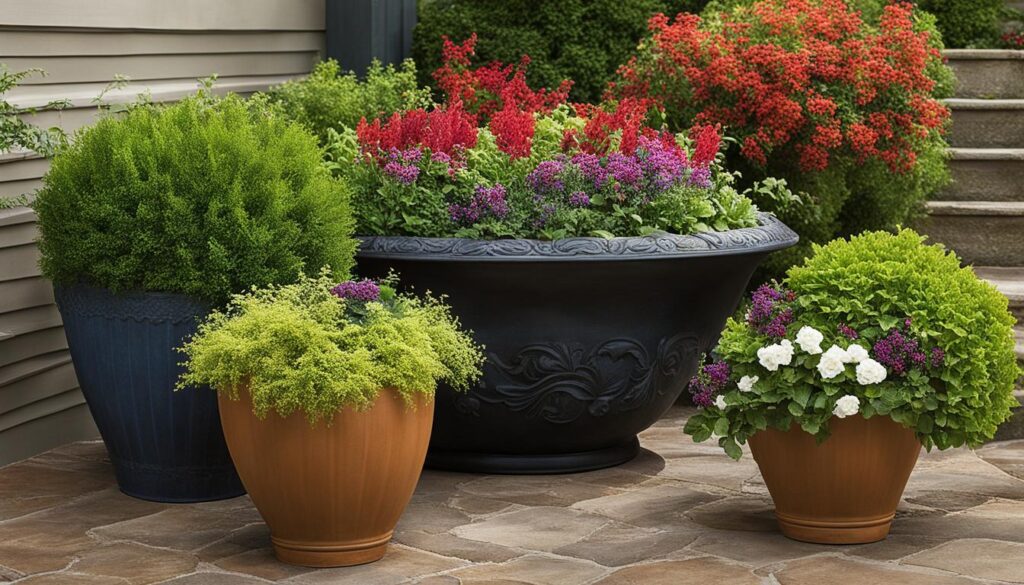
When it comes to container gardening, the design of your containers can make all the difference in creating an eye-catching and visually appealing display. By using the “thriller, filler, spiller” technique and experimenting with different plant combinations, you can create a container design that is both aesthetically pleasing and dynamic.
In container design, the thriller plant serves as the focal point. It’s usually a tall or showy plant that adds height and drama to the arrangement. The filler plants add volume and texture, filling in the spaces around the thriller. Finally, the spiller plants cascade over the edges of the container, softening the overall look and adding a touch of whimsy.
When choosing plants for your container design, consider mixing different colors, textures, and heights to create visual interest. You can pair contrasting colors for a bold and vibrant display or opt for a monochromatic scheme for a more subtle and elegant look. Don’t be afraid to mix and match plant varieties to achieve the desired effect.
| Thriller | Filler | Spiller |
|---|---|---|
| Dracaena marginata | Impatiens walleriana | Trailing Petunia |
| Agave americana | Salvia | Creeping Jenny |
| Canna Lily | Lantana | Sweet Potato Vine |
“Container gardening is an art form that allows you to express your creativity and personal style. By combining different plant varieties and playing with colors and textures, you can create stunning container designs that will impress both you and your guests.”
Don’t be afraid to experiment with different plant combinations and container sizes. You can create striking designs with a single container or group multiple containers together for a more impactful display. Just remember to choose plants that have similar growing requirements to ensure they thrive together in the same container.
So go ahead and unleash your creativity. Create a container design that reflects your unique style and personality. Whether you prefer a bold and vibrant look or a more subtle and serene ambiance, container gardening gives you the flexibility to bring your vision to life.
Planting the Container
Now that you have selected the perfect containers and chosen the right plants, it’s time to start planting your container garden. Proper planting techniques are crucial for the success of your plants and the overall health of your container garden. Follow these steps to ensure your plants thrive:
- Start by gently removing the plants from their nursery pots. If the roots are tightly bound, gently loosen them to encourage healthy growth.
- Next, prepare the container by filling it with a high-quality potting mix. Make sure the soil is well-draining, as waterlogged soil can lead to root rot.
- Place your “thriller” plant or plants, which are the focal point of your design, in the center of the container. Surround them with the “filler” plants to add volume and texture.
- Finally, add the “spiller” plants towards the edges of the container, allowing them to cascade down and create a visually pleasing effect.
Pay attention to spacing and ensure each plant has enough room to grow. You can refer to a container gardening guide or consult a container gardening expert for specific planting instructions and recommendations based on your chosen plants and the size of your garden plot. Taking the time to properly plant your container garden will set the stage for a thriving and beautiful display of plants.
Container Care and Maintenance
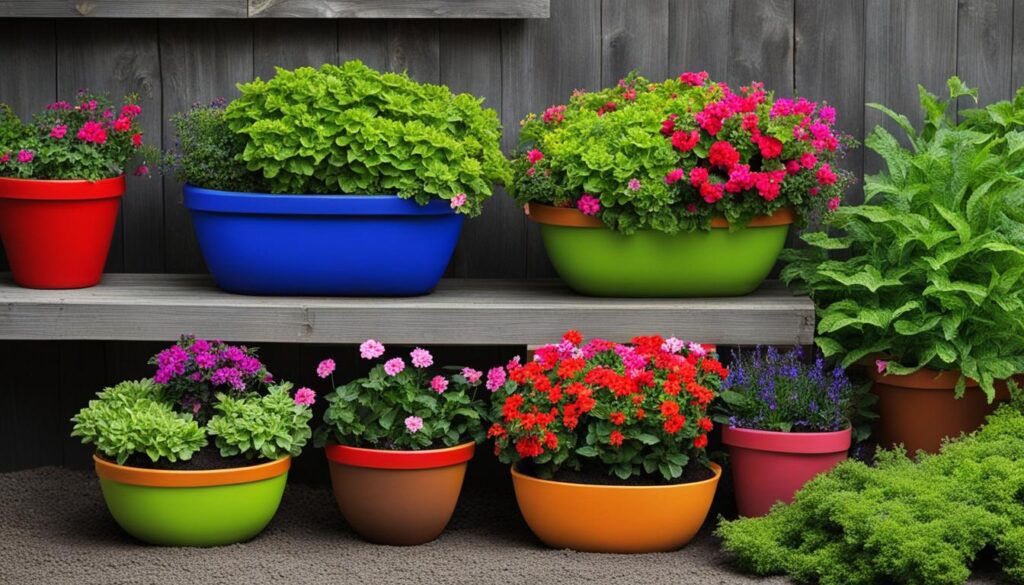
Proper care and maintenance are necessary for the health and vitality of your container garden. Taking care of your plants includes essential tasks like watering, fertilizing, and regular maintenance. Here are some key tips to ensure your container garden thrives:
- Watering: Water your plants regularly, especially during the growing season. Ensure the soil is consistently moist but not waterlogged. Morning watering allows moisture to dissipate through day, reducing disease risk. Water until it drains from bottom drainage holes, don’t let containers dry out completely.
- Fertilizing: Provide essential nutrients to your plants by using a slow-release fertilizer or supplementing with liquid plant food. Follow the instructions on the fertilizer’s packaging for the correct dosage and application method. Top dress containers with compost or slow-release granules mid-season for added nutrients. Be careful not to over-fertilize, which can burn plant roots and leaves.
- Growing Season: Understand the specific needs of your plants during their growing season. Some plants may require more water and fertilizer than others, so adjust your care routine accordingly.
- Sun or Shade: Monitor the amount of sunlight your plants receive and adjust their placement accordingly. Some plants thrive in full sun, while others prefer partial shade. Research the sunlight requirements of each plant to ensure optimal growth.
- Regular Maintenance: Regularly inspect your container garden for any signs of pests, diseases, or wilting. Remove any dead or diseased foliage promptly to prevent the spread of pathogens. Prune your plants as needed to maintain their shape and promote healthy growth. Deadhead flowering plants to encourage continuous blooming.
By following these container care and maintenance tips, you can ensure the health and longevity of your container garden. Remember to personalize your care routine based on the specific needs of your plants and the environmental conditions in your area.
| Watering | Fertilizing | Growing Season | Sun or Shade | Regular Maintenance |
|---|---|---|---|---|
| Water regularly, ensuring the soil is consistently moist but not waterlogged. | Use slow-release fertilizer or liquid plant food to provide essential nutrients. | Understand the specific needs of your plants during their growing season. | Monitor the amount of sunlight your plants receive and adjust their placement accordingly. | Regularly inspect for pests and diseases, remove dead foliage, and prune as needed. |
Remember to enjoy the process of caring for your container garden and appreciate the beauty and rewards it brings to your urban environment.
“A well-maintained container garden can bring joy and beauty to any space. By providing the right care and attention, you can create a thriving oasis of plants and transform your urban environment.” – Container Gardening Expert
Choosing the Right Soil Mix
Choosing the right soil mix is crucial for the success of your container garden. The quality of potting soil directly affects the growth and health of your plants, so it’s essential to select a mix that provides good drainage and moisture retention. A well-draining soil mix allows excess water to escape, preventing waterlogged soil and root rot. At the same time, it should retain enough moisture to keep your plants hydrated.
One popular choice is organic potting soil. Organic potting soils are made from natural ingredients and enriched with organic matter, providing essential nutrients for your plants. They promote healthier root development and overall plant growth. Additionally, organic potting soils are free from synthetic pesticides and chemicals, making them a sustainable and environmentally friendly option for container gardening.
When choosing a potting soil, look for blends specifically formulated for container gardening. These mixes typically contain a balanced combination of peat moss, perlite, vermiculite, and compost or other organic matter. They provide the ideal balance of drainage, moisture retention, and nutrient availability for container plants. Avoid using garden soil or topsoil in containers, as they can become compacted and hinder drainage, leading to plant stress and poor growth.
| Pros of Organic Potting Soil | Cons of Organic Potting Soil |
|---|---|
| Rich in nutrients for healthier plant growth | May be more expensive than regular potting soil |
| Environmentally friendly and sustainable | Can retain too much moisture if overwatered |
| Promotes beneficial microbial activity in the soil | May have a stronger odor compared to regular potting soil |
| Free from synthetic pesticides and chemicals | May contain more pests or weed seeds |
Quote:
“The right soil mix is the foundation for a thriving container garden. Choose a well-draining yet moisture-retentive mix, such as organic potting soil, to provide your plants with the ideal growing conditions.” – Container Gardening Expert
Choosing the Right Soil Mix: Key Takeaways
- Select a potting soil mix specifically formulated for container gardening.
- Opt for organic potting soil to provide essential nutrients and promote healthier plant growth.
- Avoid using garden soil or topsoil, as they can hinder drainage and lead to plant stress.
- Look for blends that contain a balanced combination of peat moss, perlite, vermiculite, and compost or other organic matter.
- Consider the pros and cons of organic potting soil before making your decision.
Selecting Suitable Plants for Containers
Choosing the right plants for your container garden is crucial to ensure their successful growth and vitality. When selecting plants, consider their specific needs and how well they will thrive in containers. Here are some key factors to keep in mind:
- Sunlight requirements: Different plants have varying levels of sunlight needs. Determine whether your containers will be placed in a sunny or shaded area and choose plants accordingly.
- Moisture levels: Some plants require more water than others. Consider the watering requirements of each plant and ensure that you can provide the necessary moisture levels.
- Space requirements: Take into account the size of your containers and the eventual size of the plants. Ensure that the plants will have enough room to grow and thrive without becoming overcrowded.
When it comes to selecting suitable plants for containers, it is best to choose varieties that are known to perform well in containers. Look for plants that are labeled as being suitable for container gardening or consult with your local nursery for recommendations. Popular choices for container gardens include flowers, herbs, vegetables, and ornamental foliage. Experiment with different combinations of plants to create visually appealing and diverse container gardens.
Remember that the success of your container garden also depends on proper care and maintenance. Regularly monitor your plants for any signs of distress or nutrient deficiencies, and make adjustments as needed. Providing optimal growing conditions, such as proper sunlight, watering, and fertilization, will help ensure that your chosen plants thrive in their containers.
Selecting Suitable Plants for Containers – Examples
| Plant | Sunlight Requirements | Moisture Levels | Space Requirements |
|---|---|---|---|
| Geraniums | Full sun to partial shade | Regular watering, moderate moisture | Space plants 8-12 inches apart |
| Tomatoes | Full sun | Regular watering, consistent moisture | Space plants 12-24 inches apart |
| Succulents | Full sun to partial shade | Infrequent watering, well-draining soil | Space plants 6-12 inches apart |
| Herbs (such as basil, rosemary, and mint) | Full sun to partial shade | Regular watering, well-draining soil | Space plants 4-8 inches apart |
These are just a few examples of plants that are well-suited for container gardening. When selecting plants, refer to their individual care requirements and consider how they will complement each other in terms of sunlight, moisture, and space requirements. With careful planning and consideration, you can create a beautiful and thriving container garden filled with plants that will grow and flourish in their containers.
Providing Optimal Growing Conditions
Providing optimal growing conditions is key to the success of your container garden. The amount of light your plants receive is crucial for their growth and overall health. Different plants have varying requirements for sun or shade, so it’s important to determine the ideal conditions for your specific plant selections.
Consider the hours of direct sunlight your plants need and place them accordingly. Some plants thrive in full sun, while others prefer partial shade. Pay attention to the intensity and duration of sunlight throughout the day to ensure your plants receive the appropriate amount of light.
In order for your plants to thrive, the soil in your containers must be suitable for their needs. Monitor the moisture levels and make sure the soil remains evenly moist but well-drained. It’s important to strike a balance as too much moisture can lead to root rot, while too little can cause plants to wither. Regularly check the soil to ensure it doesn’t become too dry or waterlogged.
Additionally, consider providing protection from extreme weather conditions or strong winds by placing your containers in a sheltered area or using wind barriers. This will help prevent damage to your plants and maintain optimal growing conditions. By taking these measures, you can create an environment in which your container garden thrives and flourishes.
Table: Recommended Sunlight Conditions for Common Container Plants
| Plant | Light Requirements | Hours of Direct Sun |
|---|---|---|
| Tomatoes (Solanum lycopersicum) | Full sun | 6-8 hours |
| Geraniums (Pelargonium spp.) | Full sun | 6-8 hours |
| Ferns (Various species) | Partial shade | 2-4 hours |
| Petunias (Petunia spp.) | Full sun to partial shade | 4-6 hours |
Note: The sunlight requirements mentioned above are general guidelines. It’s important to research the specific needs of your chosen plants and adjust the lighting conditions accordingly.
Tips for Watering
Proper watering is essential for the health and vitality of your container garden. Container plants typically require more frequent watering than garden plants due to their limited soil volume. To ensure successful watering, there are a few key factors to consider:
- Check the plant tag: Each plant has specific watering requirements. Check the plant tag or do some research to understand how often and how much water your plants need.
- Water when the soil feels dry: Monitor the moisture level of the soil regularly and water when it feels dry to the touch. Stick your finger about an inch into the soil to determine if it’s time to water.
- Plants in smaller containers may require more frequent watering: Smaller containers tend to dry out more quickly than larger ones. Keep an eye on the moisture level of the soil, especially during hot and dry periods.
- Avoid waterlogged soil: Overwatering can lead to waterlogged soil, depriving the plant roots of oxygen. This can cause root rot and other issues. Make sure the water drains well after watering and remove any excess water from saucers or drip trays.
| Common Signs of Underwatering | Common Signs of Overwatering |
|---|---|
| – Dry and wilting leaves | – Yellowing leaves |
| – Soil feels dry to the touch | – Moldy or musty smell |
| – Leaf edges may turn brown and crispy | – Stunted growth |
Remember, every plant is unique, and its watering needs may vary. Observe your plants closely and adjust your watering routine accordingly. Regularly checking the moisture level of the soil and providing the right amount of water will help your container garden thrive.
Maintaining a Healthy Container Garden
Maintaining a healthy container garden requires regular maintenance to ensure the well-being of your plants. Here are some essential practices to incorporate into your routine:
Pest Control
Pests can pose a threat to your container garden, so it’s crucial to implement pest control measures. Regularly inspect your plants for any signs of infestation, such as chewed leaves or tiny insects. If you identify pests, use organic pest control methods to protect your plants without harming the environment. This can include using insecticidal soaps, horticultural oils, or neem oil sprays, which effectively combat common pests like aphids, spider mites, and mealybugs. Isolate plants with disease symptoms immediately to prevent spread. Trim off affected leaves or branches with fungal/bacterial issues. Use row covers as a physical barrier against insects.
Disease Prevention
Preventing diseases is fundamental to maintaining a healthy container garden. To minimize the risk of plant diseases, practice good sanitation by removing any dead or diseased foliage immediately. Ensure proper air circulation around your plants by spacing them appropriately and avoiding overcrowding. Additionally, avoid overwatering, as excessive moisture can create a conducive environment for fungal infections. If you notice signs of disease, consult a gardening guide or local experts to identify the specific problem and implement suitable treatment.
Pruning
Regular pruning is essential for maintaining the shape and vitality of your container plants. Prune any overgrown, damaged, or diseased branches to promote new growth and prevent further damage. Additionally, remove any crossing or rubbing branches to prevent potential injuries. Use clean and sharp pruning tools to make precise cuts at a 45-degree angle just above a leaf node or bud. Proper pruning techniques will help maintain the overall health and appearance of your plants.
Deadheading
Deadheading refers to the practice of removing spent flowers from your container plants. By deadheading, you encourage continuous blooming and redirect the plant’s energy towards new growth rather than seed production. To deadhead, simply remove the faded flowers by snipping them off just above a leaf node or bud. This practice not only improves the overall appearance of your container garden but also promotes the longevity of flowering plants.
By incorporating regular maintenance practices such as pest control, disease prevention, pruning, and deadheading, you can ensure the health and vitality of your container garden. Stay vigilant and proactive in caring for your plants, and enjoy the beauty and rewards that come with maintaining a thriving container garden.
Overwintering Container Plants
Overwintering container plants is a crucial step in ensuring their survival, especially in colder climates where frost and freezing temperatures can damage or kill delicate plants. By taking the necessary precautions, you can protect your container plants and enjoy their beauty for years to come.
One of the most effective ways to protect container plants from frost is by moving them indoors. Find a suitable location in your home, such as a sunny window or a greenhouse, where the plants can receive adequate light. Before bringing them indoors, make sure to inspect the plants for any signs of pests or diseases and treat them accordingly.
Insulating Large Containers
For larger containers that cannot be easily moved indoors, insulating them is essential. This can be done by wrapping the containers with insulating materials such as burlap or bubble wrap. Another effective method is to fill the empty space around the plants’ root systems with packing peanuts. The peanuts act as insulation, protecting the roots from freezing temperatures.
During the dormant period, it’s crucial to monitor the moisture levels of the container plants. Overwatering can lead to root rot, while underwatering can cause the plants to dry out. Strike a balance by checking the soil regularly and providing water only when necessary.
| Container Plants: Winter Protection Guide | Recommended Actions |
|---|---|
| Move plants indoors | Find a suitable location with adequate light |
| Inspect for pests and diseases | Treat any issues before bringing plants indoors |
| Insulate large containers | Wrap with burlap or bubble wrap, or fill with packing peanuts |
| Monitor moisture levels | Water plants only when necessary |
By following these tips and providing the necessary protection, you can ensure the survival of your container plants through the winter months. Overwintering container plants allows you to enjoy their beauty year after year, creating a vibrant and thriving garden.
Designing for Small Spaces
Container gardening is a perfect solution for those with limited space, such as small balconies or tiny patios. With some creativity and strategic planning, you can maximize your small space and create a flourishing garden oasis. Here are some ideas and techniques for designing a container garden in small spaces:
1. Balcony Gardening:
If you have a balcony, utilize the vertical space by hanging planters or installing a railing planter. This not only adds greenery to your balcony but also saves valuable floor space.
2. Window Boxes:
Window boxes are a fantastic way to bring nature closer to your living space. Install them on your windowsills, and fill them with colorful flowers or herbs. Not only do they add charm to your home, but they also provide easy access to fresh herbs for your culinary adventures.
3. Vertical Gardening:
Vertical gardening is a great technique for maximizing space. Use vertical trellises or wall-mounted planters to grow climbing plants such as tomatoes or beans. This allows you to enjoy fresh produce without sacrificing valuable floor space. Check out our article on how to maximize your harvest growing tomatoes in a container
4. Creative Solutions:
Think outside the box and explore creative solutions for small-space gardening. Hang baskets from the ceiling, repurpose old containers into planters, or create a tiered garden using shelves or steps. These unique ideas not only add visual interest but also make the most of every available spot.
With these tips and techniques, you can transform your small space into a thriving container garden. Remember to choose plants that are well-suited for your specific conditions and consider their sunlight and water requirements. Enjoy the process of designing your small-space garden and watch as it brings life and beauty to every corner of your home.
Troubleshooting Common Issues
Container gardening, like any other form of gardening, can come with its fair share of challenges. Understanding and addressing common issues is key to maintaining a healthy and thriving container garden. Here are a few potential problems you may encounter and some tips to troubleshoot them:
1. Plant Diseases
Plant diseases can manifest in various ways, including discoloration, spots, rot, or wilting. To prevent and treat plant diseases, practice good hygiene and sanitation by regularly cleaning your containers and tools. Remove and dispose of any infected plants or plant parts to prevent the spread of disease. Additionally, choose disease-resistant plant varieties and provide proper air circulation to minimize the risk of fungal infections.
2. Pest Infestations
Pests such as aphids, mites, or slugs can wreak havoc on your container garden. Monitor your plants regularly for signs of pests, such as chewed leaves or sticky residue. Introduce natural predators like ladybugs or use organic pest control methods to keep pest populations in check. Consider placing physical barriers, such as copper tape, around your containers to deter slugs and snails.
3. Nutrient Deficiencies
Yellowing leaves or stunted growth can indicate nutrient deficiencies in your container plants. Ensure that you’re using a high-quality, nutrient-rich potting mix. Supplement with organic fertilizers or slow-release fertilizers according to the specific needs of your plants. Regularly monitor your plants for signs of nutrient deficiencies and adjust your fertilization schedule accordingly.
4. Wilting and Yellowing Leaves
Wilting and yellowing leaves are often signs of over or under watering. Assess the moisture level of your soil regularly and adjust your watering routine accordingly. Provide adequate drainage to prevent waterlogged soil, which can lead to root rot and other issues. Remember that different plants have varying water needs, so be attentive to the individual requirements of each plant in your container garden.
| Problem | Cause | Solution |
|---|---|---|
| Plant Diseases | Fungal or bacterial infections | Practice good hygiene, remove infected plants, choose disease-resistant varieties |
| Pest Infestations | Aphids, mites, slugs | Monitor regularly, introduce natural predators, use organic pest control methods |
| Nutrient Deficiencies | Lack of essential nutrients | Use nutrient-rich potting mix, supplement with organic fertilizers |
| Wilting and Yellowing Leaves | Over or under watering | Monitor soil moisture, adjust watering routine, provide adequate drainage |
Remember that troubleshooting common issues in container gardening requires observation, patience, and a bit of experimentation. As you become more experienced and attuned to the needs of your plants, you’ll develop a better understanding of how to address and prevent common problems. Enjoy the journey of container gardening and the rewards of a beautiful and thriving garden in your urban space.
FAQ
Q: What is container gardening 101 and how do I start?
A: Container gardening 101 is the process of growing plants in containers instead of planting them in the ground. This includes vegetables, herbs, and other edible plants. It’s ideal for those who have limited space like a small yard or a balcony. To start, you’ll want to choose plants that suit your climate and the amount of sun your outdoor area receives. Then, get pots that have good drainage and use potting soil specifically designed for container plants.
Q: How do I choose the right pot for container gardening?
A: When choosing a pot for container gardening, probably the most important factor you have to consider is size. The pot should be large enough to accommodate the plant when it’s fully grown and its roots have totally spread. Remember, many plants will grow quite large, while others require more space to spread out. As a container garden tip, it’s best to research the specific needs of the plants you plan to put in each pot.
Q: How important is the potting soil used in container gardening?
A: The kind of soil you use is crucial in container gardening. It’s best to choose potting soil that is specifically designed for potted plants. This is because regular garden soil might not drain well when contained in a pot. You’ll learn that good drainage is important because it ensures that the water doesn’t stay at the bottom of the container, which can lead to the roots becoming water-logged and subsequently, your plant might die.
Q: What container garden tips do you have for ensuring good drainage?
A: Ensuring good drainage is vital for container gardening. A simple tip is to put a small layer of pebbles or small rocks at the bottom of the container before you add the potting soil. This provides a space for excess water to go, thus preventing the roots from becoming saturated. Also, you’ll want to make sure there are one or more holes in the bottom of your container.
Q: What are some good plants to choose for container gardening?
A: There are a vast majority of plants that can be grown in containers. Many people use flowers to add color to their backyards, front porches, or balconies. However, many herbs and vegetables also do well in containers and require little space. Tomatoes, peppers, lettuce, and cucumbers are all good choices for vegetable gardening in containers. Rosemary, basil, thyme and chives are all herbs that are easy to grow and look great when placed around your home.
Q: How do I take care of plants in containers?
A: Caring for plants in containers isn’t too different from caring for those in the garden. However, it may be that your container dries out more quickly, especially in hot weather, so it’s crucial to monitor the soil’s moisture regularly. Depending on the plants you grow, you may also need to provide extra nutrients through a good fertiliser because the nutrients in the soil can be quickly used up.
Q: Can I make my container garden look attractive?
A: Absolutely, you can make your container garden look attractive and inviting. Choose containers that suit your style and enhance the beauty of the plants. Try to match or contrast the colors of the plants with the pots for an eye-catching display. Also, consider the height and spread of the plants, mixing tall, short, and trailing plants within one container for an interesting visual effect.
Q: What are the benefits of growing edible plants in containers?
A: Growing edible plants in containers has many advantages. If you have little space, you can still grow your own fresh produce. Many people find it easier to protect their plants from pests when they are in containers. Plus, pots can be moved to make the most of the sunlight, which can be beneficial for many varieties of vegetables. Seedlings can also be started in containers and then moved outdoors once the weather is warmer.
Q: Can container gardening be done indoors?
A: Yes, container gardening can definitely be done indoors. Many herbs, for instance, will grow well in containers indoors, all you need is a sunny windowsill. Indoor container gardening allows those without a garden to still reap the benefits of growing their own plants. It’s also useful for starting seedlings off before they’re moved outside.
Q: How easy is it for a beginner to get started with container gardening?
A: Container gardening is wonderful for beginners. It requires less space and resources than a traditional garden and gives you more control over the environment your plants grow in. Plus, there are countless resources and container garden tips and tricks available to help indoor gardeners get their green thumb. So if you’re interested, I’d love to tell you – just get started!
Conclusion
Container gardening 101 is the perfect way to enhance your lifestyle and embrace the joys of gardening, even in urban environments. By following the beginner’s blueprint, you can nurture your green thumb and create a thriving container garden that adds beauty and vibrancy to your home.
With the right container selection, suitable plants, and proper care and maintenance, your container garden can flourish in even the smallest of spaces. Whether you have a small balcony or a spacious patio, container gardening allows you to experience the joys of nature and create your own urban garden oasis.
So, start your container gardening journey today and discover the countless benefits it brings to your lifestyle. Embrace the beauty of nature, nurture your green thumb, and enjoy the wonders of gardening through the art of container gardening.
Source Links
- https://www.bhg.com/gardening/container/plans-ideas/simple-sunny-container-garden/
- https://www.thespruce.com/raised-planter-box-plans-4775011
- https://www.gardeners.com/how-to/create-planters-that-stand-out/5325.html
The Complete Guide to Container Gardening by Sue Fisher – https://www.dk.com/us/book/9781465443874-the-complete-guide-to-container-gardening/


